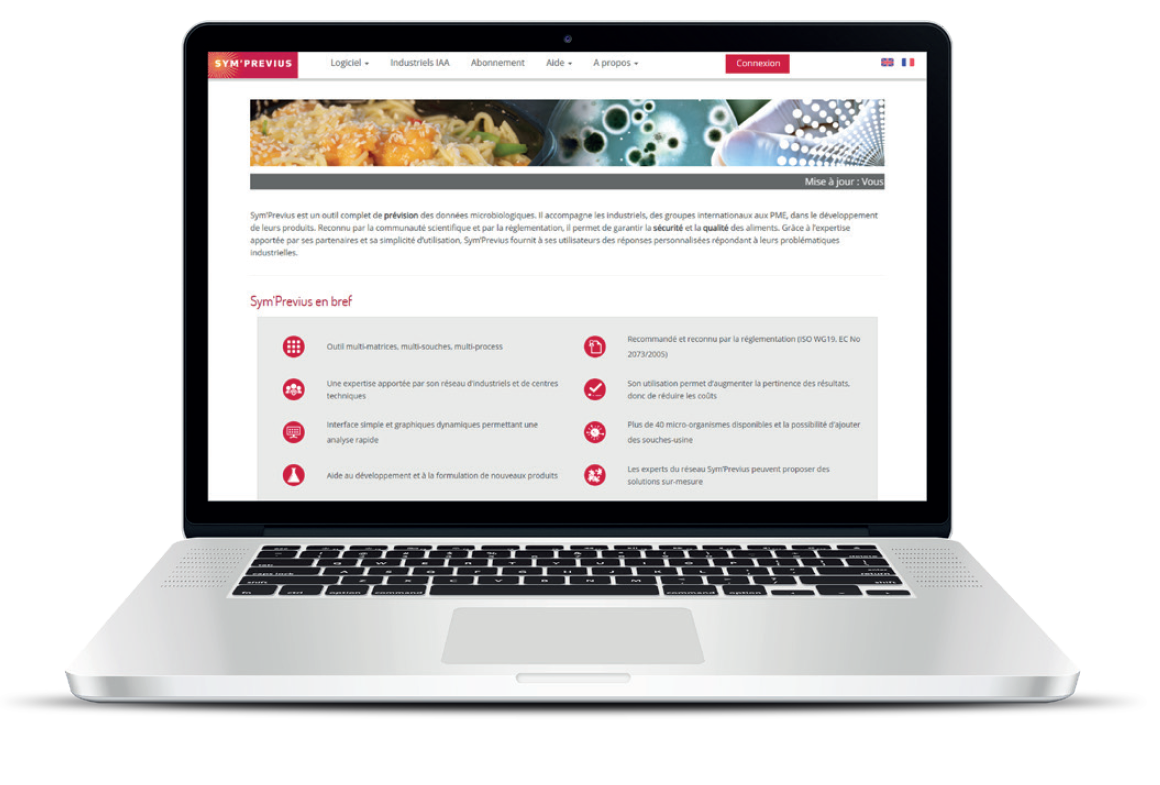Models
The models from the Sym’Previus simulation tools describe the bacterial response to temperature, pH, water activity (and in some cases, lactic acid concentration).
These models are based on the “Gamma” concept formulated by Zwietering et al. (1992). This concept is based on the observation that factors influencing bacterial growth (temperature, pH, aw) have multiplicative effects on bacterial growth rate. The concept was then extended to thermal inactivation by Leguérinel et al. (2005).
Models based on simple biological parameters


The growth models in Sym’Previus are defined by the cardinal values of a bacterial strain (e.g. minimum, optimal and maximum growth temperatures), using the approach developed by Rosso et al. (1993, 1995).
Note that in the Sym’Previus, field isolates have been prioritized over laboratory strains for data generation. For some bacteria such as Listeria monocytogenes, these cardinal values have been determined for up to 14 different field strains, allowing the intra-species variability to be taken into account in the model predictions.
An approach that integrates challenge-test data and microbiological tests

An originality of the Sym’Previus approach is to give our users the option of integrating their own data (e.g. presence/absence of contaminants, microbiological counts and challenge-tests) to fine-tune model predictions. The data uploaded to the system is saved in the user’s private account, which ensures the confidentiality.
Presence/absence data can be used to estimate the prevalence and the distribution of initial contamination.
Challenge-test data can be used to calibrate model predictions to the food of interest. It is strongly advised that the challenge-tests used for this purpose be conducted in accordance with internationally recognized Guidance Documents (normative reference frame ISO 20976-1). Sym’Previus experts are active in the ISO/TC34/SC9/WG19 working group which edited the ISO 20976-1 regarding Challenge tests.
Models validated by a scientific committee

The quality of the Sym’Previus software is guaranteed by a scientific committee in charge of validating the experimental data, and by the publication of the predictive models in peer-reviewed journals.
Click here for a list of publications produced by or in relation to the Sym’Previus project.



